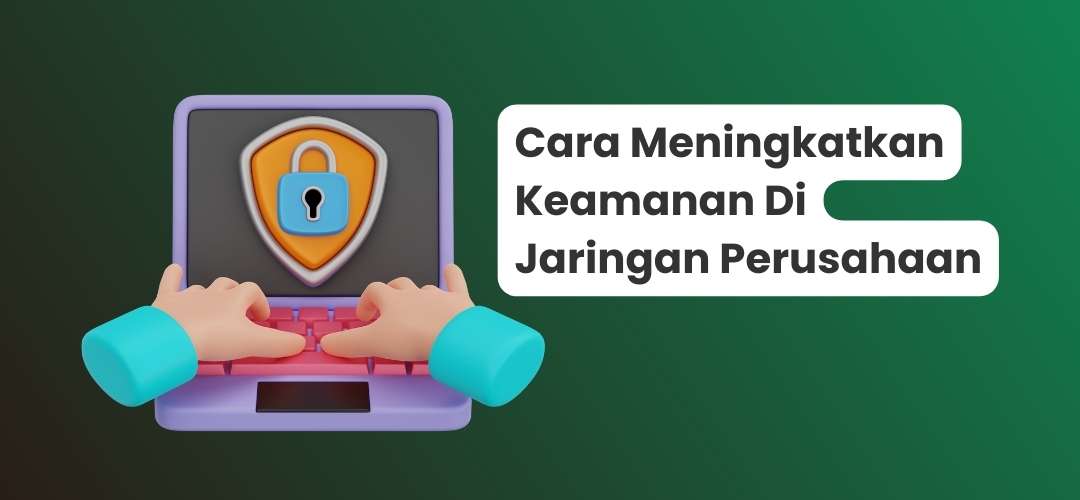Ensuring the security of a company’s network is essential to the success and sustainability of the business, even more so for technology companies. After all, the heart of technology companies is the smooth running of the technology they implement.
Of course, there are many things and factors to consider to improve security. However, the following five steps will help to form a foundation for a secure network:
Perform a Network Audit
Before implementing any security enhancements, it is important to conduct a comprehensive network security audit. This step is similar to reviewing your current position, identifying weaknesses, and setting a roadmap for improvement. A network security audit should investigate various aspects, including:
- Identifying potential security vulnerabilities
- Assessing the strength of the firewall
- Evaluating the effectiveness of antivirus and anti-malware software
- Reviewing the history and schedule of backups
- Identifying unused or unnecessary applications running in the background
- Assessing the overall health of servers, software, and applications
The depth of the audit depends on the size of the organization, with larger companies requiring a more comprehensive assessment. This audit is part of the overall cybersecurity process and policy, with a specific focus on the network itself. The results of the audit serve as the foundation for developing a strategic plan to address the identified weaknesses, which can be implemented either internally or through a third-party network security provider.
Keep antivirus/anti-malware software updated
While implementing antivirus and anti-malware software at the enterprise level is an important first step, maintaining and updating this software on a regular basis is just as important. Over time, software becomes outdated, leaving the network vulnerable to potential vulnerabilities. Implementing a routine and ongoing schedule to update all user software throughout the network is essential. This includes ensuring that all staff devices, such as desktops, laptops, and phones, have the latest security updates.
Regular updates not only improve protection against emerging cyber threats but also mitigate common attack points exploited by cyber criminals. Prioritizing the maintenance of anti-virus & anti-malware software contributes significantly to the overall resilience of the network.
Subscribe to a Virtual Private Network (VPN)
A Virtual Private Network (VPN) is an essential component of a comprehensive network security strategy. A VPN encrypts network connections, ensuring online privacy for all users. By masking IP addresses, VPNs make online activity almost untraceable and establish a secure encrypted connection, providing better privacy than even a secure WiFi hotspot.
For IT companies with remote workers who connect to public Wi-Fi networks, such as cafes, restaurants, and airports, VPNs serve as an important line of defense. They protect against potential threats on insecure networks, keeping sensitive information and communications safe. Investing in a VPN is essential for companies that prioritize the security of their remote workforce.
Install a Firewall
A firewall is essential to network security and acts as an important line of defense. While each device may have integrated firewall protection with antivirus & anti-malware software, setting up a dedicated Web Application Firewall (WAF) provides an additional layer of protection.
A WAF filters and monitors HTTP traffic between web applications and the Internet, protecting applications from potential threats. This is essential for e-commerce businesses that handle online transactions and store customer information. A WAF acts as a reverse proxy, protecting servers from exposure by requiring clients to pass through it before reaching the server. Implementing a strong firewall strategy is essential to protect data and ensure the integrity of online operations.
Establish a Network Security Maintenance System
In addition to the initial setup, maintaining network security requires a proactive approach. Establishing a network security maintenance schedule is essential to stay ahead of emerging threats. The main actions that should be included in the maintenance schedule are:
- Keeping software up to date
- Updating network names and passwords regularly
- Updating user passwords periodically
- Running routine activity reports
- Performing routine backups
- Scheduling training sessions on the latest security developments
This maintenance schedule ensures that the network remains resilient to emerging threats, and staff members remain informed about potential risks. Network security is not a one-time effort but a continuous process that requires ongoing attention and adaptation.
Improving network security, especially in technology companies, is a task for many parties that requires a comprehensive and strategic approach.
Hypernet, as a Managed Service Provider (MSP), also implements the above steps to secure its internal network as well as its clients’ networks. Interested in working with us? Contact CS immediately.



